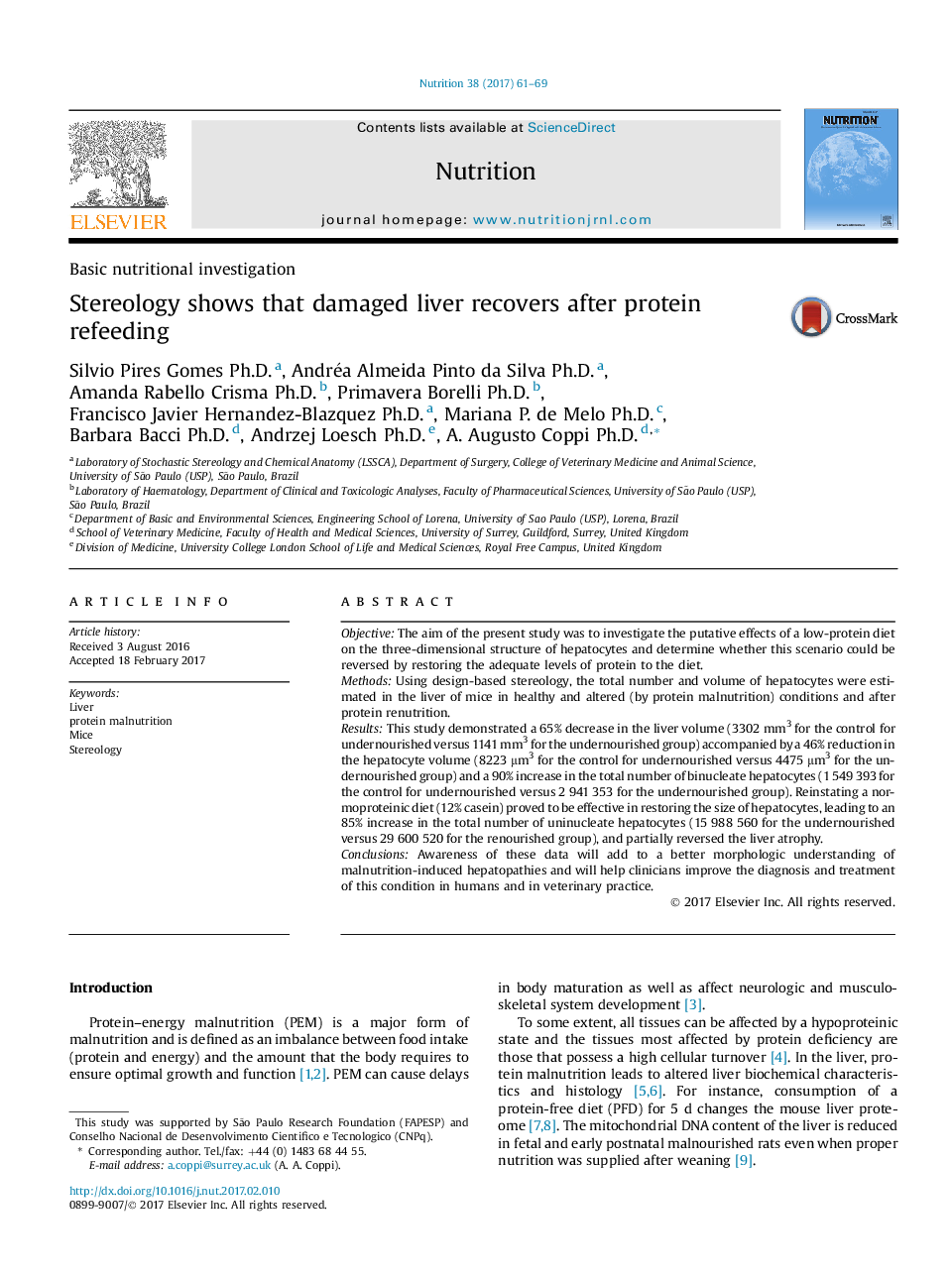| Article ID | Journal | Published Year | Pages | File Type |
|---|---|---|---|---|
| 5656893 | Nutrition | 2017 | 9 Pages |
â¢This was a study about the three-dimensional (3-D) structure of the mice liver, which uses 3-D quantitative microscopy technology to show that protein malnutrition (2% casein in the diet) induced a 65% decrease in the liver volume.â¢The decrease in liver volume was accompanied by a 46% reduction in the hepatocyte volume and a 90% increase in the total number of binucleate hepatocytes, which indicate proliferative capacity activating liver plasticity.â¢After renutrition by reinstating a normoproteinic diet (12% casein), which proved to be effective in restoring the size of hepatocytes, an 85% increase in the total number of uninucleate hepatocytes and partially reversed liver atrophy (liver volume reduction) was observed.
ObjectiveThe aim of the present study was to investigate the putative effects of a low-protein diet on the three-dimensional structure of hepatocytes and determine whether this scenario could be reversed by restoring the adequate levels of protein to the diet.MethodsUsing design-based stereology, the total number and volume of hepatocytes were estimated in the liver of mice in healthy and altered (by protein malnutrition) conditions and after protein renutrition.ResultsThis study demonstrated a 65% decrease in the liver volume (3302 mm3 for the control for undernourished versus 1141 mm3 for the undernourished group) accompanied by a 46% reduction in the hepatocyte volume (8223 μm3 for the control for undernourished versus 4475 μm3 for the undernourished group) and a 90% increase in the total number of binucleate hepatocytes (1 549 393 for the control for undernourished versus 2 941 353 for the undernourished group). Reinstating a normoproteinic diet (12% casein) proved to be effective in restoring the size of hepatocytes, leading to an 85% increase in the total number of uninucleate hepatocytes (15 988 560 for the undernourished versus 29 600 520 for the renourished group), and partially reversed the liver atrophy.ConclusionsAwareness of these data will add to a better morphologic understanding of malnutrition-induced hepatopathies and will help clinicians improve the diagnosis and treatment of this condition in humans and in veterinary practice.
